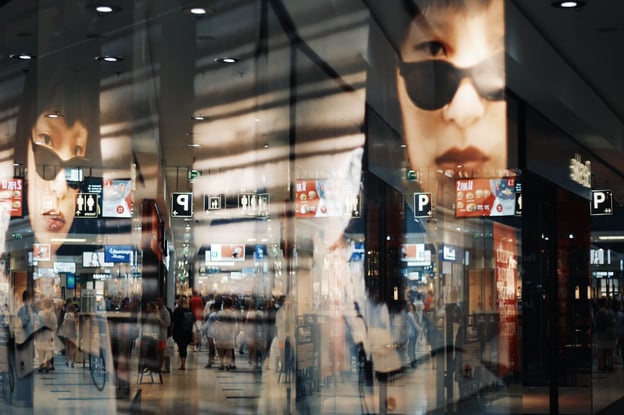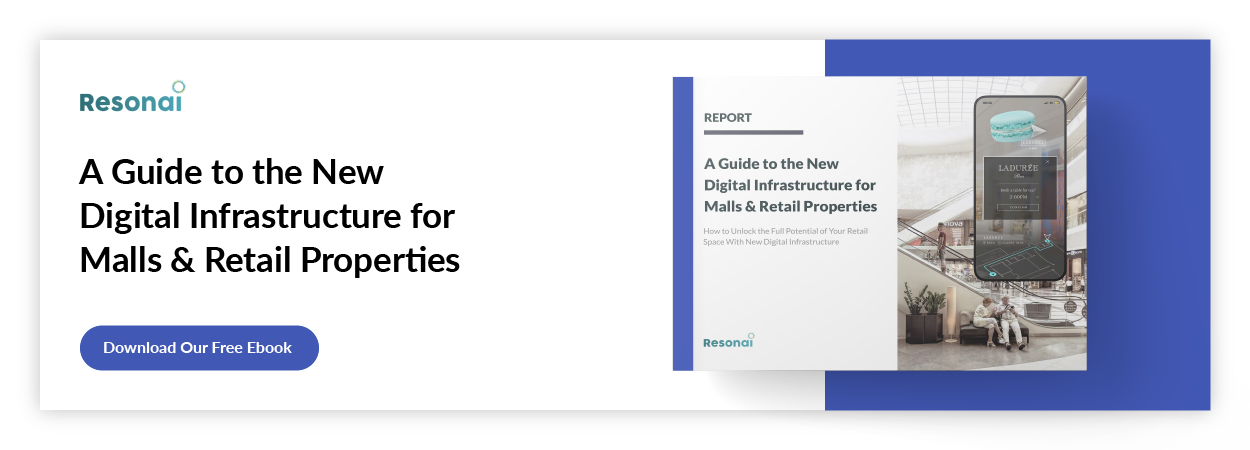Digital Signage for Malls: The 5 Most Profitable Use Cases
Improved navigation, effective ads, and personalized experiences to turn your mall into a more profitable asset

Since the first indoor regional mall in the US opened in 1956, mall owners have been looking for new ways to set their shopping experience apart from the competition, from indoor amusement parks to live entertainment and beyond. Digital signage for malls has quickly set itself apart as one of the most practical ways to redefine a retail space, and it can also be one of the most profitable — for instance, a study found that nearly half of adults say a video wall or other such sign located near a point of purchase can change what they intend to buy.
Before you invest in upgrading your location, you’ll probably want to know what exactly you will get out of the arrangement. We’ve broken down the five most profitable use cases of digital signage for malls right here. You can find even more reasons to make the switch with our guide to the six biggest benefits of digital signage in retail.
Jump to a section
Indoor navigation keeps customers on the right path
Retail media reaches customers at their most activated
Personalized experiences keep customers coming back
More novel means more memorable
More valuable spaces means higher demand
The future of digital signage lives in AR
Looking for more ways to elevate your retail experience with digital signage? Check out our article, Retail Digital Signage: The Ultimate Guide.
Indoor navigation keeps customers on the right path
Unfortunately, the experience of getting lost in a mall is such a common and troublesome one that it even has a famous psychological study named after it. Attempts to alleviate this problem with the occasional kiosk covered in a big map and a tiny “you are here” dot can leave visitors more confused, especially if it isn’t regularly updated to match ongoing developments throughout the mall.
Unlike a static map, digital signage for malls can easily pull double duty as personalized navigation and wayfinding experiences. All visitors need to do is find their nearest info display, tap on where they want to go, and follow the dotted line to their destination — better still if your mall uses AR-powered wayfinding to lay out the path right in front of their eyes. Customers who always know how to get where they’re going will spend more time shopping and less time being frustrated. Plus, you don’t need to worry about reprinting maps for all those kiosks when new stores open or old ones close. Just update the map on your digital signage backend, and each connected kiosk will automatically follow.
Retail media reaches customers at their most activated
Digital signage for malls can turn any common space into an advertising opportunity packed with the most relevant promotions possible. It’s hard to think of a better time to inform customers about new products than when they’re already at the mall and ready to spend. The rapid rise of retail media has proven just how valuable placing ads in retail spaces both online and offline can be, with giants such as Walmart, Kroger, and Target all jumping on board to make the most of their spots.
Eye-catching, frequently updated advertising in key positions provides another opportunity to generate value from existing tenants and external advertisers. Just like with the maps, running ads on digital signage also means far less overhead when it’s time to swap them out.
Personalized experiences keep customers coming back
A study by Twilio Segment found that 44% of consumers are likely to take their business elsewhere if a store isn’t personalized to their wants and needs, and that number is likely to increase in coming years. The ubiquity of ecommerce, which can instantly personalize each user’s experience based on their shopping history and other markers, has also shifted expectations for physical retail. Store shelves that automatically reposition themselves for each customer are still firmly in science fiction territory, but digital signage can help bridge that gap.
Customer loyalty accounts linked with local digital displays could unlock special content especially for VIP customers, including callouts for exclusive savings or novel ways to share their love for the brand on social media. Digital signage could double as an instant scavenger hunt, unlocking loyalty account achievements as customers see parts of the mall they may have missed before. User data from previous purchases could also inform personal recommendations for new stores to try. Personalized customer experiences are no longer just for online retail.
More novel means more memorable
One of the best ways to make any given experience more memorable is to make it more novel. Researchers found that pure novelty spurs the brain in a series of experiments which proved subjects were more likely to remember the “oddball” presented in a range of familiar subjects. You can’t change your mall’s infrastructure and layout between every visit to make people more likely to remember their time there, but you can make sure its digital signage always has something new to share.
More valuable spaces means higher demand
Digital signage for malls can keep customers pointed in the right direction, show them advertisements at the perfect time and place, offer personalized experiences to retain their interest, and ensure each visit is full of novel sights to see and remember. Current tenants will notice the difference in foot traffic and sales, and high-value new tenants will see the possibilities unfold as they weigh the benefits of setting up in your building.
Digital signage is one of the most sure-fire ways to modernize a mall. But if you want to prepare your retail spaces for the next step in the crossover between the real world and the metaverse, you need to think a step ahead.
The future of digital signage lives in AR
There are only so many places that digital signage for malls can fit, but AR breaks past such real-world limitations to create a more engaging experience for customers and an easier and more effective setup for businesses. Taking your mall from a static real-world installation to a future-proof digital hybrid sounds daunting, but Vera from Resonai puts it all within reach for nearly any kind of location.
With a phone in their pocket, customers can step into a world of new experiences intuitively meshed with their physical surroundings: from wayfinding that guides them to their next destination with step by step overlays, to notifications for upcoming events at stores, and even special exhibits to bring new life to common spaces. Digital signage still has a vital role to play in today’s retail ecosystem, but Vera can help push it into tomorrow and beyond.
Are you ready to learn more? Get in touch with Resonai today and set up a free demonstration.
Subscribe to Our Newsletter!
Read More
7 Shopping Mall Floor Plan Resources and Design Tips to Give Your Layout a Boost
The shopping mall experience has undergone significant change in the past few years, and after two...
The Big List of Shopping Mall Design Standards & Guidelines to Know
Despite the many trend pieces announcing its imminent decline, Americans are not done with the...
5 Considerations for a Small Shopping Center Design
Retail has rebounded significantly since the beginning of the COVID-19 pandemic. Occupancy rates...
